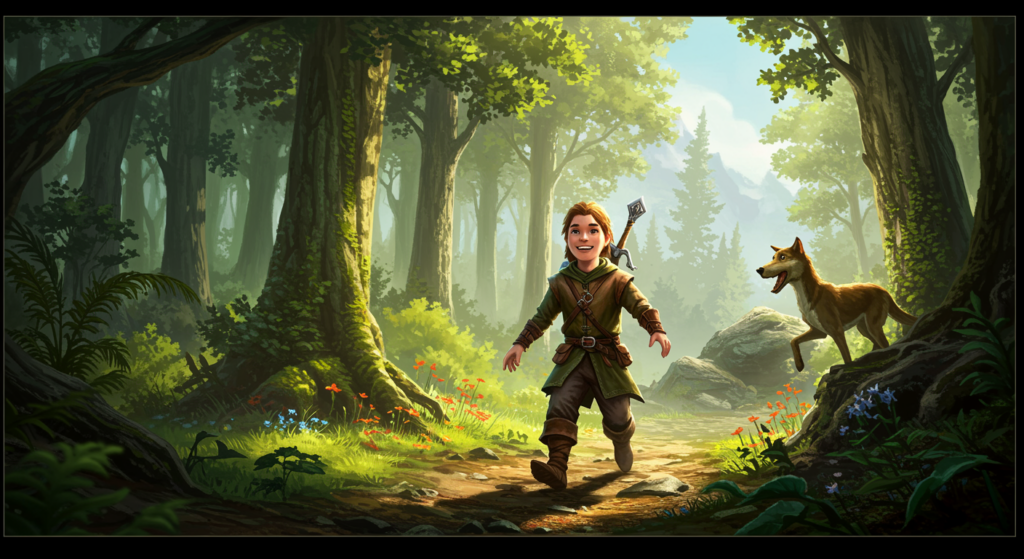
Oblivion Remake: Visuals Like a Remake, Gameplay Like a Remaster
Introduction to Oblivion Remastered
The buzz around Oblivion Remastered has been hard to ignore, as it revives The Elder Scrolls IV with a mix of cutting-edge visuals and timeless gameplay. Imagine stepping back into Tamriel, but with landscapes that pop like never before, while the core adventures feel just as they did back in the day. This update from Bethesda and Virtuous strikes a clever balance, making it a standout for fans wondering if it’s worth revisiting.
Have you ever replayed an old favorite and wished for better graphics without losing what made it special? That’s exactly what Oblivion Remastered delivers, blending modern polish with classic charm. We’ll break down the key changes, from eye-catching visuals to subtle gameplay tweaks, so you can decide if this is the version you’ve been waiting for.
Visual Updates and Enhancements in Oblivion Remastered
Oblivion Remastered transforms the game’s look in ways that feel like a full remake, breathing new life into every corner of its vast world. Developers have overhauled the lighting, textures, and models, turning what was once pixelated into a stunning, immersive experience that rivals today’s blockbusters.
For instance, the new real-time lighting system casts dynamic shadows and glows that make exploring dungeons or sunlit forests feel alive and unpredictable. This isn’t just a quick fix; it’s a complete rebuild of assets, where every tree, rock, and character model has been redesigned for sharper details and deeper realism.
Picture wandering through the Imperial City at dusk—the enhanced textures bring out intricate details on buildings and armor that were barely noticeable before. If you’re a fan of open-world exploration, these changes make Oblivion Remastered a visual feast that pulls you in deeper than ever.
Impact on Gameplay Experience with Oblivion Remastered
These visual overhauls don’t just sit pretty; they enhance how you play. The refined third-person view, for example, centers the camera over your shoulder, letting you appreciate the new details without fumbling controls. Switching perspectives with a simple button press, like R3, adds fluidity that makes combat and navigation more engaging.
Ever get lost in a game’s world because it looks so real? That’s the magic here—Oblivion Remastered‘s visuals make stealth missions or epic battles more immersive, helping you connect with the story on a new level. It’s a subtle nod to modern gaming while keeping the essence intact, so newcomers might find themselves hooked from the first quest.
What if you could relive your favorite moments with better clarity? This update does just that, turning exploration into an art form and reminding us why The Elder Scrolls series endures.
Gameplay Changes and Improvements in Oblivion Remastered
While the visuals scream remake, Oblivion Remastered‘s gameplay sticks to remaster territory, polishing the originals without overhauling the fundamentals. New movement animations smooth out walking, running, and even swimming, making traversal feel more natural and less clunky than before.
Take sprinting, for example—it’s a simple addition that ramps up the pace during chases or escapes, yet it doesn’t disrupt the game’s rhythm. Combat has also gotten a boost with updated animations, giving swings and blocks a weightier feel that enhances every duel without changing the strategy.
The levelling system draws inspiration from both Oblivion and Skyrim, offering a balanced progression that rewards exploration and skill use. If you’ve played the original, you’ll appreciate how these tweaks make grinding less tedious, allowing for a more enjoyable journey through Tamriel.
Here’s a tip: Experiment with the new mechanics early on to get a feel for how they complement the classic quests. It’s like upgrading your favorite tool—it works better, but still feels familiar in your hands.
Classic Elements Retained in Oblivion Remastered
Not everything has changed; Oblivion Remastered wisely keeps iconic features like the lockpicking and persuasion minigames intact, just with fresher visuals to match the update. These elements retain their original challenge and charm, ensuring that puzzle-solving stays as satisfying as ever.
The command console is another holdover, letting veterans tweak settings or cheat a bit, just like in the 2006 version. Why fix what isn’t broken? This approach keeps the game accessible for purists while introducing modern conveniences.
Imagine tackling a tough lock with the same tension as before, but now with crisper graphics—it’s a perfect blend that honors the past. For new players, this means diving into the lore without a steep learning curve, making Oblivion Remastered an ideal entry point to the series.
Comparing Remaster vs Remake in Oblivion Remastered
Understanding Oblivion Remastered means looking at how it fits between a remaster and a remake. Remasters typically refresh graphics and performance for modern hardware, while remakes rebuild everything from the ground up—Oblivion Remastered splits the difference smartly.
In gameplay, it leans remaster with minor enhancements that preserve the original’s spirit, appealing to longtime fans. Visually, though, it’s more like a remake, with such extensive updates that it feels reborn. This hybrid approach broadens its appeal, drawing in both nostalgic players and fresh faces.
Why does this matter? It ensures the game ages gracefully, avoiding the pitfalls of full rewrites that might alienate originals. If you’re debating an upgrade, consider how these changes enhance replayability without erasing memories.
Oblivion Remastered: A Table of Remaster vs Remake Traits
| Characteristic | Remaster | Remake |
|---|---|---|
| Visuals | Updated but retains original feel | Completely rebuilt for modern standards |
| Gameplay | Minor changes to enhance experience | Reimagined or significantly altered |
| Target Audience | Primarily existing fans | Both existing fans and new players |
This comparison highlights how Oblivion Remastered prioritizes accessibility, making it a smart evolution rather than a revolution. It’s a lesson in balancing innovation with tradition, something developers often get right in series like The Elder Scrolls.
Wrapping Up with Oblivion Remastered
Oblivion Remastered stands out as a thoughtful update, merging breathtaking visuals with the gameplay we adore, creating an experience that’s both nostalgic and new. Whether you’re chasing dragons in Skyrim or revisiting Cyrodiil, this version proves that some games only get better with time.
If you’ve been on the fence, why not give it a try and see how these changes breathe fresh air into your adventures? Share your thoughts in the comments below—what’s your favorite update, or do you miss anything from the original? For more Elder Scrolls insights, check out our related articles, and don’t forget to share this with fellow gamers.
References
- PC Gamer. “Oblivion Remastered Changes and Features List.” Link
- Push Square. “Oblivion Remastered: Everything New and All Changes Compared to the Original Oblivion.” Link
- IGN. “The Elder Scrolls 4: Oblivion Remastered Finally Revealed in First-Look Gameplay and It’s Out Today.” Link
- YouTube. “Oblivion Remastered Gameplay Trailer.” Link
- YouTube. “In-Depth Look at Oblivion Remastered Changes.” Link
- TechRadar. “PS5 Pro Games List.” Link
- GameSpot. “Everything New and Different in Elder Scrolls IV: Oblivion Remastered.” Link
- YouTube. “Oblivion Remastered Visual Comparison.” Link
Oblivion Remastered, Visual Updates, Gameplay Changes, Remaster vs Remake, Elder Scrolls IV, Oblivion Remake, Tamriel Enhancements, Bethesda Updates, Classic RPG, Gaming Remasters







